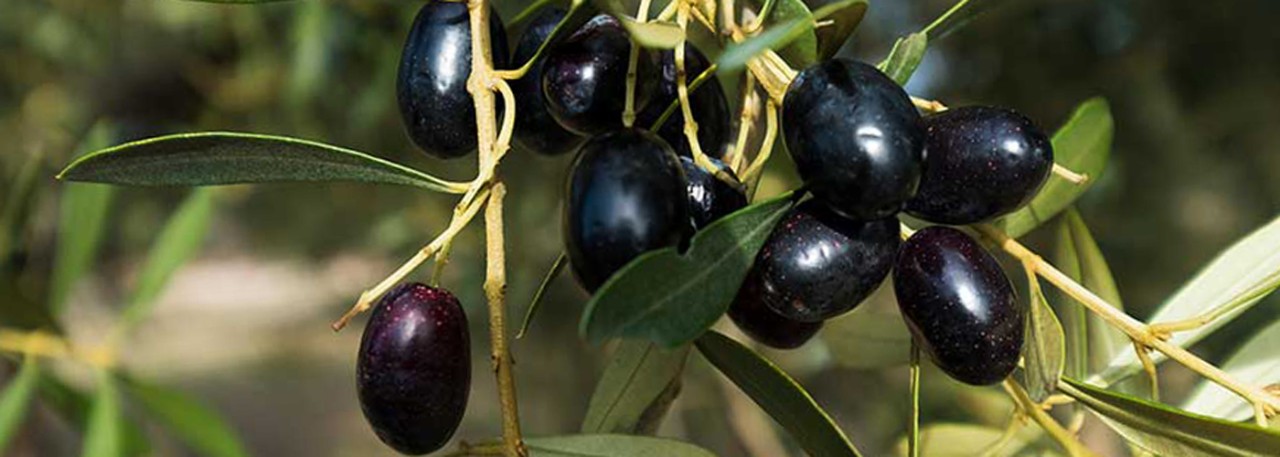.png.transform/rendition-xs/image_image%20(1).png)
Aceite del Baix Ebre-Montsiá PDO
Extra virgin olive oil obtained from the fruit of olive trees Olea Europea L., from three native varieties - Morruda or Morrut, Sevillenca and Farga, by mechanical or other physical means that do not alter the oil, preserving the flavor, aroma and characteristics of the fruit it comes from.
Tasting notes
Clear, transparent oil without any cloudiness. The color may vary depending on the time of harvest and location within the production area, from greenish-yellow to golden-yellow. This oil is very flavorsome and aromatic, fruity at the start of harvesting and becoming slightly sweet as harvesting progresses.
Other notes
The analytical characteristics are as follows:
- Maximum acidity (% oleic acid): 0.8º
- Maximum peroxides (meq. ox/kg)(1): 18
- K270: maximum 0.20
- K232: maximum 2.00
- Maximum moisture and volatile content (%): 0.20
- Maximum impurities (%): 0.10.
Production / Processing method
Plant density is usually 70 to 90 trees per hectare / 2,471 acres. Growing methods are the usual ones in this production area. Pruning removes old wood, giving the tree a globe shape to promote fruit set and harvesting. 96% of olive orchards are dry-farmed, with just 4% being irrigated. Harvesting is carried out by the “milking” method, with fruit being picked manually direct from the tree when fully ripe. The olives are transported to the mills in plastic crates or in bulk in a trailer, always respecting the conditions laid down in the Quality Manual to ensure they are not damaged.
When the olives reach the oil mill, the batches are classified by potential quality. They are then washed and weighed, and samples are taken to test oil yield and acidity. The period between harvesting and crushing must be a maximum of 48 hours.
The oil is then mechanically extracted from the olives. The operation involves washing and crushing, beating the paste (90-120 minutes at a maximum temperature of 35ºC / 95ªF), phase separation and storage. Finally, the olive oil is packed in containers with a maximum capacity of five liters. The whole process, from growing to labeling, must be carried out in the olive production area.
Geography / Relief and climate
The olive-growing area of Baix Ebre-Montsià is very much influenced by the river Ebro and lies in the valley it forms between the mountains that stretch along the coast in southern Catalonia. To the east are the Tortosa-Beceite Mountains reaching an altitude of 1,447 m / 4,747 ft at Mount Caro and, to the west, the Cardó and Boix ranges. The Mediterranean sea ensures that the climate is mild.
The soils are eroded limestone, with a lime crust, known locally as the “taperot”, which varies in depth. This feature sets the Baix Ebre-Montsià apart from other olive-growing areas, even some that are close to the protected area. This alkalinity marks the link between the environment and the product.
The climate is maritime Mediterranean, with very mild winters and average maximum temperatures of 23ªC / 73.4ªF, about 2ºC /35ªF higher than other neighboring areas. This means the fruit grown here ripens faster and earlier. A differentiating element in the climate is the Mistral wind (N-NW), which is dry and persistent and blows hard and fast in fall and winter, channeled by the Ebro river basin and spurred on by the relief.
Regulatory Council
Consejo Regulador de la DOP Aceite del Baix Ebre-Montsiá
Ctra. Raval de Crist, s/n
43500 Tortosa (Tarragona)
Cataluña
Tel: (+34) 977 581 212
info@acobem.com
www.acobem.com/
Sources:
- Spanish Ministry of Agriculture
Harvesting is carried out by the “milking” method, with fruit being picked manually direct from the tree when fully ripe.


- Aceite del Baix Ebre Montsiá 1
- Aceite del Baix Ebre Montsiá 2

Tortosa (Catalonia)
